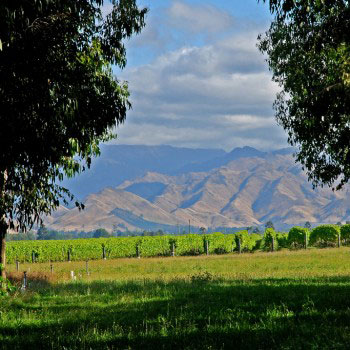The centerpiece of VeritageMiami each year is the wine tasting we hold at Shops of Merrick Park, a gather that routinely pulls in more than 1,500 wine lovers to taste nearly 400 different wines. And regular as clockwork, just as the tasting wraps up, one or more of my colleagues will ask, “Which wine is your favorite?” What intrigues me is that most of us walk through the tasting asking questions like, “Do you have any pinot noir?” or, “May I have some of the malbec I’ve heard about,” or, “That’s an interesting rosé – what’s in it?” All of these questions have to do with grape varieties, but when I speak with guests at the end of the tasting about which wines they enjoyed most, they invariably give me a specific brand or winery. It would seem we search out wines by grape, but remember them on a much more specific level, right down to the brand or winemaker.
Now, that is great for wineries – they want you to love sauvignon blanc, for example, so long as it is their sauvignon blanc. They want you to believe there is something special about how they make sauvignon blanc, something that will help you build brand loyalty. And it’s true – many wineries make very distinctive wines and it is the nuances of those wines that many of us love most.
 A Vineyard in Marlborough (Photo: Flickr)
A Vineyard in Marlborough (Photo: Flickr) Checking my calendar and seeing that there is the first ever “sauvignon blanc world congress” coming up in New Zealand next month, I realized there are actually two types of brands for some wines – the brand of the winery, and the brand of the wine’s country or region of origin. New Zealand Sauvignon Blanc is a brand of sorts – for most consumers, the entire country (and certainly Marlborough, it’s most famous region for the grape variety) makes the wine with a distinctive character. The green character and strong notes of gooseberry fruit and lime and grapefruit peel are so distinctive even a beginning wine lover can pick a New Zealand sauvignon blanc in a blind tasting. That character is at the heart of two talks I’m giving next month at the Broward Center, where I’m comparing sauvignon blanc from New Zealand and France to show how the same grape produces very different wine depending on where it’s grown and who makes it. I’m using this as a vinous metaphor for how different conductors, singers and stage directors can take the same opera score and come up with very different productions.
At next month’s conference, 400 sauvignon blancs from eight countries will be on tasting tables so delegates can explore unique regional styles. We live in a period when many wines seem to be losing their regional identity. Big, opulent, jammy cabernet sauvignon is so popular it is increasingly hard to tell a Napa cab from a wine from Australia, Chile or the south of France. The idea of a sauvignon blanc congress is somehow very reassuring to me. I prefer the way sauvignon blanc is made in France’s Loire Valley to the often pungent examples I taste from New Zealand, but I am very glad both styles, and many others, exist. The adventurous wine lover thrives on differences, not homogeneity in wine.
You can see just how wonderfully varied wine can be when we uncork the Fine Wine Tasting at VeritageMiami this October 6. There will be a lot of wine there, so it’s probably best to start preparing by training your palate with a glass of wine tonight!
